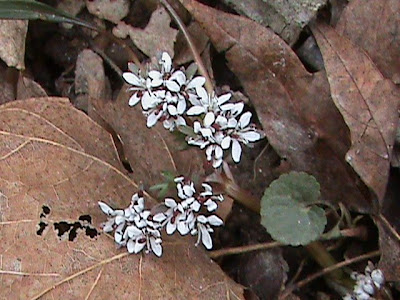

 Chestnut-sided Warbler with its flashy yellow cap. Photo by John Howard.
Chestnut-sided Warbler with its flashy yellow cap. Photo by John Howard.Traditionally, this was the way coffee was grown until 1972. Most varieties of coffee prefer to grow under a canopy of shade trees. The coffee plants are protected from direct sun and the fallen leaves from the trees provide mulch to retain soil moisture. The abundant birds feed on insects and naturally reduce damage from insect pests. In 1972, new sun-tolerant coffee hybrids were introduced that produced higher yields of coffee beans. Growers started switching their crops to the new form, cutting down trees in the process. Unfortunately, the new sun coffee needed high volumes of pesticides. Because the areas are cleared of other plants, erosion and mineral depletion required additional fertilizers to be applied to the soil.
 Bee-buzz!!! Bee-buzz!!! I love that sound and then the subsequent chase to
Bee-buzz!!! Bee-buzz!!! I love that sound and then the subsequent chase to
find where it is hiding. These little guys are great ventiloquists. You
think it is located in the shrub right in front of you and realize it is actually
180 degrees behind you! Blue-winged Warbler photo by John Howard.

The brilliant flame-colored throat of a Blackburnian Warbler always
stops me in my tracks. Photo by John Howard.
So what is a birder to do? We love coffee; it is essential to help us roll out of bed at 4am to go looking for birds. There is an option that can make a huge difference if all of us would climb on board. Shade-grown coffee is bird-friendly and healthier for you, as well. Sun coffee is sprayed with more chemicals than any other food product. Shade-grown coffee uses very little, if any, chemicals. The coffee beans ripen slowly in the shade to develop a deeper, richer flavor. Because the crop grows in the shade, local farmers can grow fruit and nut crops along with the coffee to give them multiple sources of income. It is estimated that shade-grown coffee plants can live twice as long as sun-grown plants and some shade-grown plants can live up to 50 years!

The" zee zee, zoo zoo, zee" of the Black-throated Green Warbler was one of
the first warbler songs I learned. Photo by John Howard.

Black and White Warbler, with its beautifully patterned
zebra-striped plumage. Photo By John Howard.
So, an ordinary, everyday task of making a cup of coffee, can make a big difference to the migrant birds that visit the midwest. If nature lovers would switch to shade-grown coffee and convince a few of their friends, it could make a huge impact. If we create a demand for shade-grown coffee, this may slow the clear-cutting to produce more sun-grown fields and possibly some of the fields may be converted back to shade-grown coffee. Shade-grown coffee is good for the growers with a better livelihood and health. It is good for us becuase the coffee is grown with less chemicals. And, it is great for the birds by supplying much needed habitat. Less pesticides and more flavor! What a bargain! So, please consider the simple switch next time you make a cup of joe. There is always room for more warblers in this world!
 Summer Tanager, another gorgeous visitor of shade-grown
Summer Tanager, another gorgeous visitor of shade-grown
coffee plantations. Photo by John Howard.
For more information, please visit Birds and Beans and Audubon Coffee.
For more posts on birds, visit I and the Bird.









 The owners who released this rabbit may have been misguided, thinking that their pet could live happily "in the wild," not realizing it would suffer either a quick death by a hungry owl or coyote, or a slow one from exposure and starvation. The rabbit will be taken to a rescue group and found a new home - something the original owners should have done. Domestic pets should never be released into the parks!
The owners who released this rabbit may have been misguided, thinking that their pet could live happily "in the wild," not realizing it would suffer either a quick death by a hungry owl or coyote, or a slow one from exposure and starvation. The rabbit will be taken to a rescue group and found a new home - something the original owners should have done. Domestic pets should never be released into the parks!



